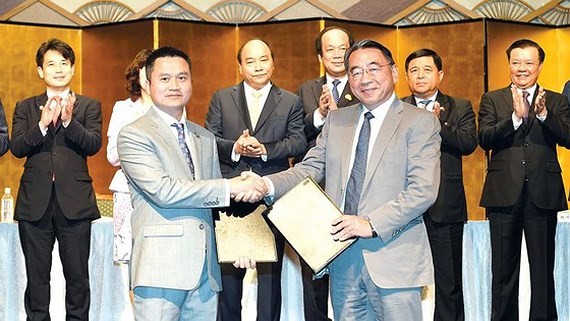
Investment capital from Japan is considered as the main capital flow, a model for the cooperation relationship between Vietnamese enterprises and foreign direct investment (FDI) ones. Lately, during the visit of Prime Minister Nguyen Xuan Phuc to Japan, there were 32 investment certificates and memorandums of understanding between Vietnamese and Japanese firms with total value of up to $8 billion having been signed.
The latest survey conducted by JETRO also showed that Vietnam ranked second among countries that Japanese enterprises choose to expand business in the future. The fact that Japanese investors expand investment in service and trade sectors will become a general trend in the next few years as several major manufacturers of Japan have previously had pumped money into Vietnam. Meanwhile, direct consumer market in Vietnam is extremely attractive to foreign service and trade enterprises.
It is expected that when the EU-Vietnam Free Trade Agreement (EVFTA) and the EU-Vietnam Investment Protection Agreement (EVIPA) become effective, export of Vietnam to the EU will rise by around 20 percent in 2020 and by 42 percent six years later. However, according to JETRO, the weakness of Vietnamese enterprises is that supporting industry has not been capable of supplying for FDI enterprises. Therefore, in the near future, domestic firms need to collaborate with FDI enterprises to increase localization ratio.
























